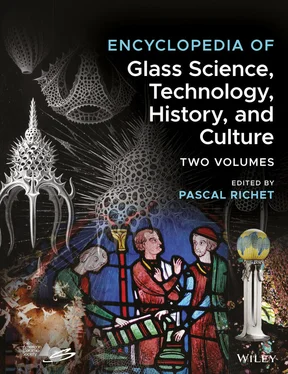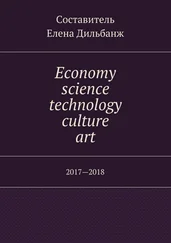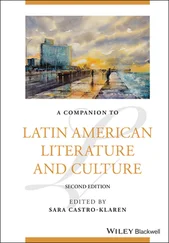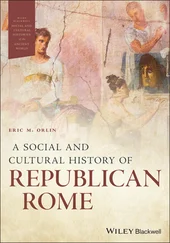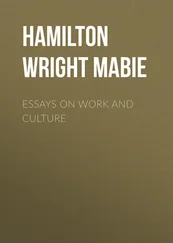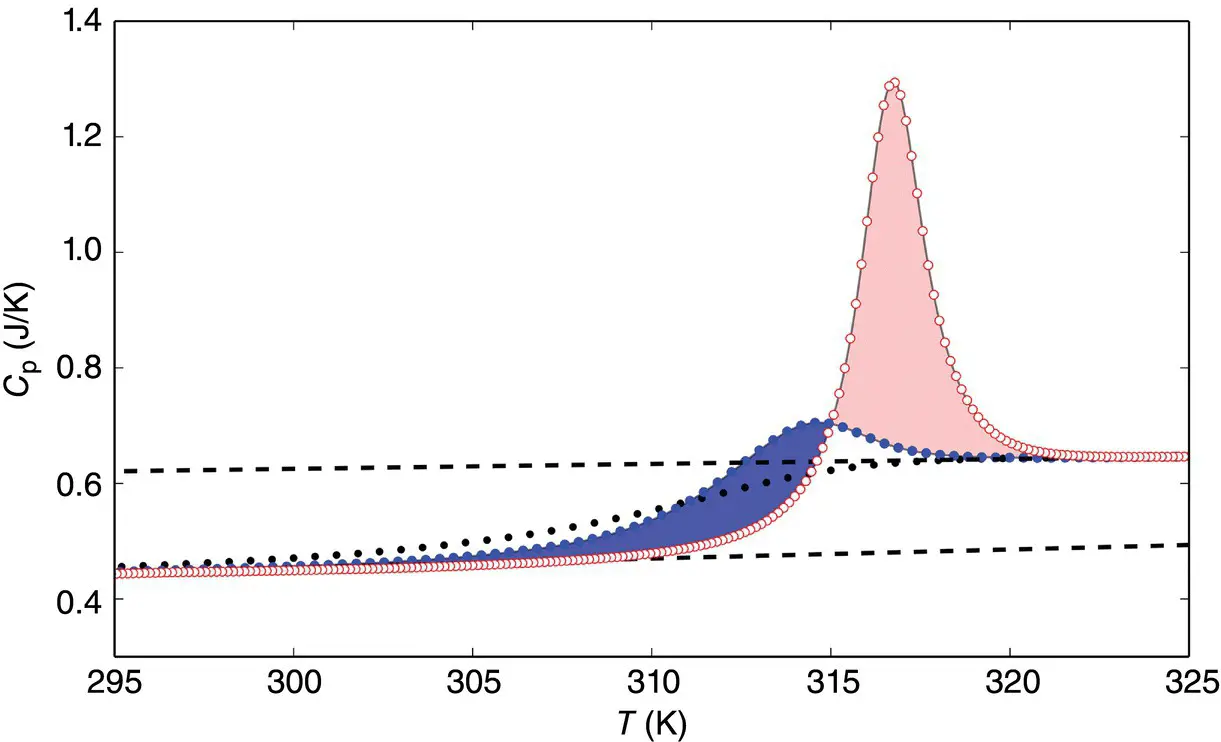
Figure 6 Effect of aging on the heat capacities of PVAc recorded upon heating at the same rate. Heat capacity after a cooling (solid circle with line) and heat capacity after cooling and 72‐hour annealing at 297 K (empty circle with line). The enthalpy released during aging estimated by the difference between the two areas included between these two curves. Heat capacities upon continuous cooling shown as solid circles.
Phenomenologically, however, in simple cases aging can be accounted for with the same approach as developed in previous sections. It is related to the relaxation of the order parameter ξ toward its equilibrium value ξ eq( P,T ) whereas the affinity A is relaxing at the same time toward zero. When applicable, the lattice‐hole theory can be used to solve Eq. (16)at constant P and T to reproduce the observed process. As done for o ‐terphenyl [19], the order parameter is calculated at constant pressure and aging temperature T = 229.5 K with Eq. (16)and a temperature‐ and pressure‐dependent relaxation time [19]. The affinity has been calculated upon heating at 60 K/min, either after cooling at 6 K/min without aging, or after cooling at the same rate but with an aging process at 229.5 K ( Figure 7). Upon isothermal aging, the affinity increases markedly (see the arrow in Figure 6) and then increases at the same rate as without aging. The difference is that the zero line is crossed at a lower temperature so that a much bigger peak is observed when the affinity finally recovers its zero equilibrium value at high temperatures. Since the affinity is an integrated measure of the heat capacity, the large peaks either calculated or observed for these properties are clear signatures of aging [19]. More complex calculations can of course be made to deal with at least two separate timescales [24], or a more realistic distribution of relaxation times.
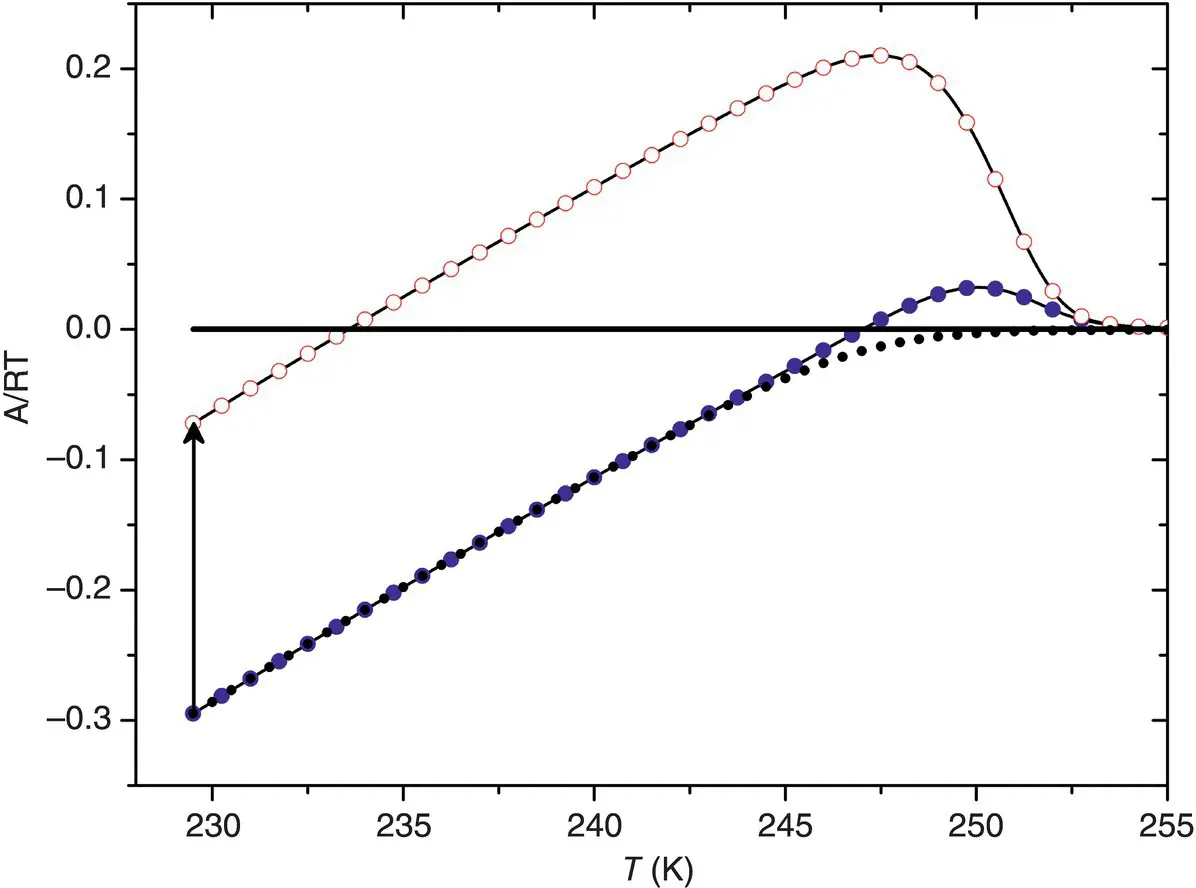
Figure 7 Effect of aging on affinities calculated with the lattice‐hole model upon heating at the same rate of 60 K/min, first after a continuous cooling at 6 K/min (black line with solid circle), and second after annealing at 229.5 K (black line with empty circle). The black arrow simulating the relaxation of affinity upon aging at 229.5 K. Affinity upon continuous cooling shown as solid circles.
Whether in the form of affinity, fictive temperature, or structural order parameter, additional variables must be introduced to deal with the nonequilibrium thermodynamics of glass‐forming systems and, in particular, with the time dependence of their properties in relaxation regimes. Phenomenological advances now make it possible to predict these properties as a function of time and temperature or to determine accurately the entropy irreversibly produced, but the mechanisms involved at the atomic or molecular level generally remain to be deciphered. The physical nature of the glass transition is a case in point, as are the origins of Kauzmann catastrophe, of the strong variations of the PD ratio, of the diversity of relaxation timescales or of, as illustrated by the well‐known memory effects, the complex nonlinear coupling of the parameters of the differential equations with which these processes are described.
Not only could highly sensitive calorimetric experiments yield valuable original data in this respect but coupling of different techniques such as dielectric spectroscopy and temperature‐modulated calorimetry should bring new insights on the dynamics and thermodynamics of the glass transition. Recent experiments on ultra‐stable organic glasses obtained by vapor deposition techniques are, for instance, promising [25, 26]. And whereas very long aging performed well below T gshould also give new clues on the laws driving complex relaxation processes in the glassy state [24], experiments made at extremely rapid timescales (e.g. spectroscopy) are in contrast needed to investigate relaxation in supercooled liquids where equilibrium is quickly achieved. To give a single example, ultrastable organic glasses obtained by vacuum‐deposition techniques should be of special interest in view of their internal stability that is equivalent of that of hyper‐aged glasses (with aging time of millions of years) obtained by conventional melt cooling [25]. For this particular class of glasses, the aforedefined T Mvalues are so much lower (by a few tens of degrees) than the standard glass transition temperatures that T Mand T gcannot be indiscriminately used in Eq. (9b)[25, 26]. Among other consequences, new insights should then be gained on the non‐unity of the PD ratio. Finally, such experiments should of course be firmly complemented by fundamental work. Microscopic theories and atomistic simulations must be developed and, as stringent tests of their value, their predictions checked in terms of macroscopic physical properties.
The authors thank J. Richard for data treatments and simulations carried out with the lattice‐hole model, G. McKenna for PVAc samples, and the reviewers for their time, remarks, and useful corrections.
1 1 Jones, G.O. and Simon, F.E. (1949). Qu'est‐ce qu'un verre? Endeavour 8: 175–181. (in French and in German).
2 2 Nernst, W. (1969). The New Heat Theorem. New York: Dover.
3 3 Takada, A., Conradt, R., and Richet, P. (2015). J. Non Cryst. Solids 429: 33–44.
4 4 De Donder, T. and Van Rysselberghe, P. (1936). Thermodynamic Theory of Affinity, A Book of Principles. Stanford: Stanford University Press.
5 5 Wondraczek, L., Mauro, J.C., Eckert, J. et al. (2011). Towards ultrastrong glasses. Adv. Mater. 23: 4578–4586.
6 6 Angell, C.A. (1995). Formation of glasses from liquids and biopolymers. Science 267: 1924–1935.
7 7 Prigogine, I. and Defay, R. (1950). Thermodynamique Chimique, Nouvelle Rédaction. Liège: Desoer; Chemical Thermodynamics (London: Longmans, 1954).
8 8 Garden, J.‐L., Guillou, H., Richard, J., and Wondraczek, L. (2012). Non‐equilibrium configurational Prigogine‐Defay ratio. J. Non‐Equilib. Thermodyn. 37: 143–177.
9 9 Davies, R.O. and Jones, G.O. (1953). Thermodynamic and kinetic properties of glasses. Adv. Phys. (Phil. Mag. Suppl.) 2: 370–410.
10 10 Kauzmann, W. (1948). The nature of the glassy state and the behavior of liquids at low temperature. Chem. Rev. 43: 219–256.
11 11 Nemilov, S.V. (1995). Thermodynamic and Kinetic Aspects of the Vitreous State. Boca Raton: CRC Press.
12 12 Tool, A.Q. (1945). Relaxation of stresses in annealing glass. J. Res. Natl. Bur. Stand. 34: 199–211.
13 13 Tool, A.Q. (1946). Relation between inelastic deformability and thermal expansion of glass in its annealing range. J. Am. Ceram. Soc. 29: 240–253.
14 14 Leuzzi, L. and Nieuwenhuizen, T. (2008). Thermodynamics of the Glassy State. New York: Taylor & Francis.
15 15 Adam, G. and Gibbs, J.H. (1965). On the temperature dependence of cooperative relaxation properties in glass‐forming liquids. J. Chem. Phys. 43: 139–146.
16 16 Binder, K. and Kob, W. (2011). Glassy Materials and Disordered Solids. Singapore: World Scientific.
17 17 Simha, R. and Somcynsky, T. (1969). On the statistical thermodynamics of spherical and chain molecule fluids. Macromolecules 2: 342–350.
Читать дальше
